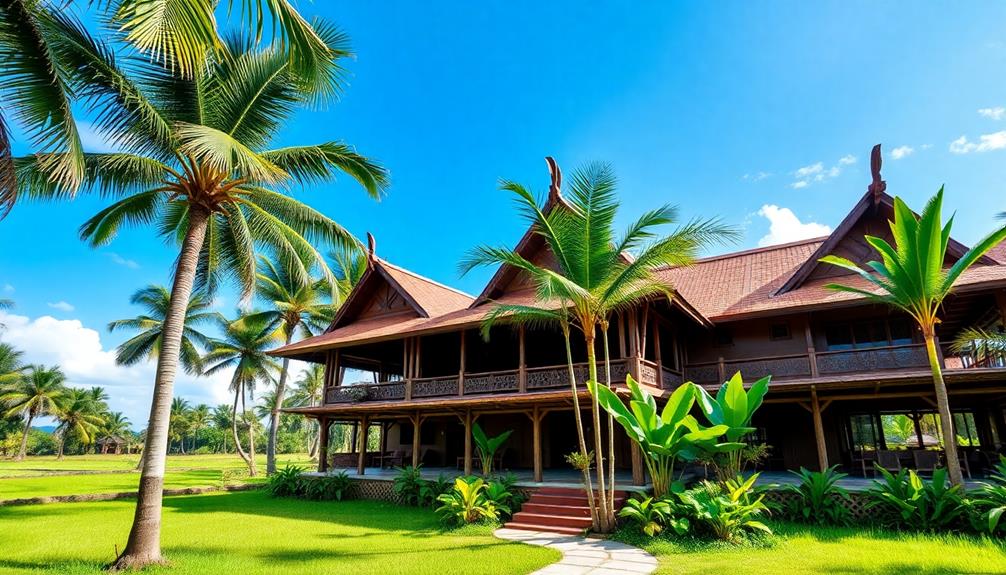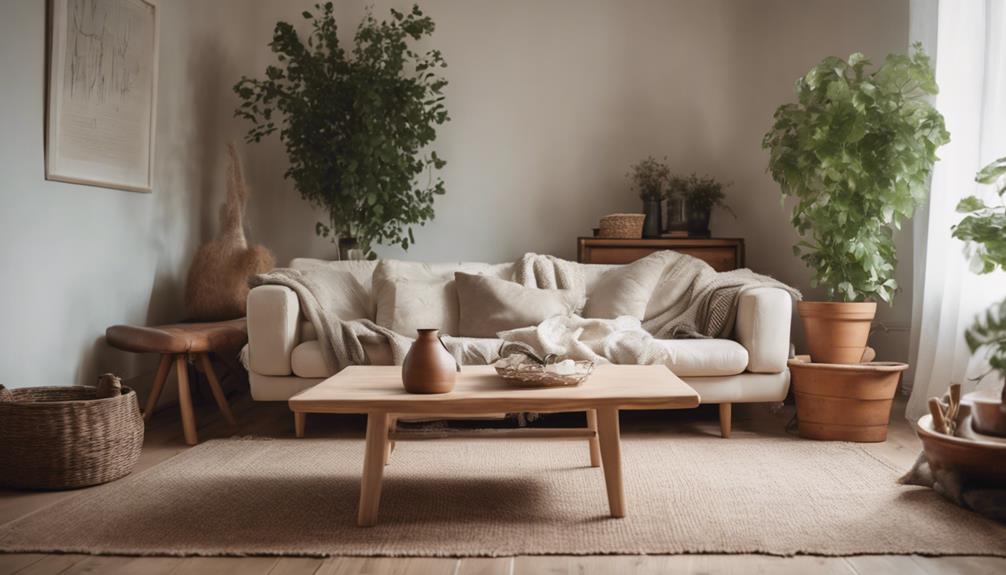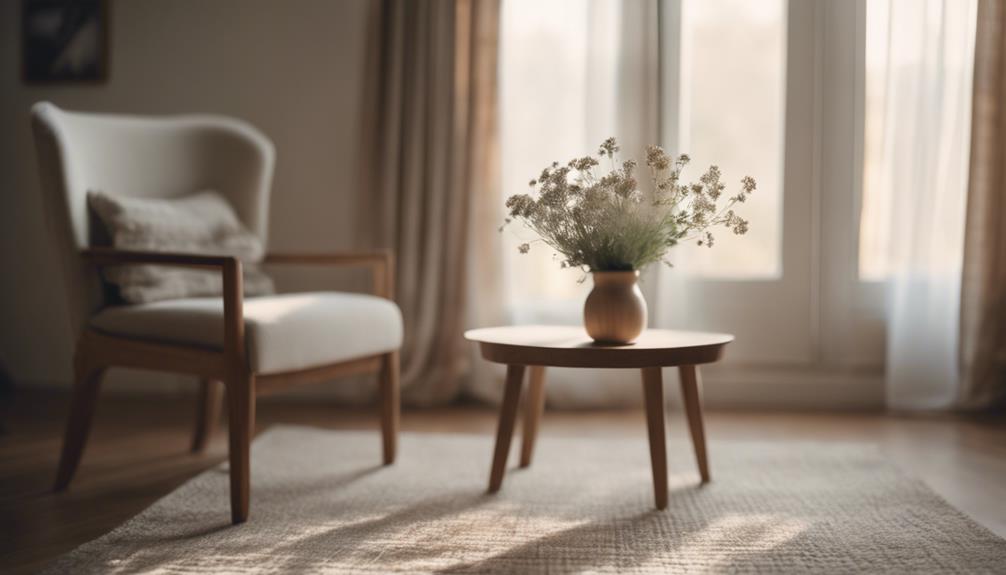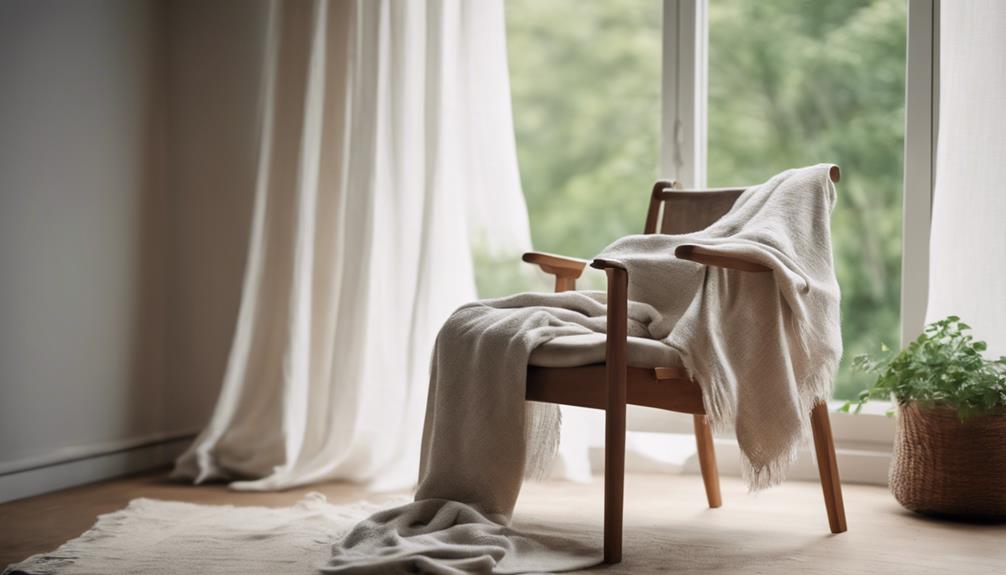When you explore house design and architecture in Indonesia, you'll find a fascinating mix of traditional and modern elements. Traditional houses, or rumah adat, use natural materials like wood and bamboo, reflecting local culture and customs. Elevated on stilts, these homes promote ventilation and protect against flooding. Colonial influences introduced unique styles, while contemporary architecture combines traditional motifs with modern designs, emphasizing sustainability. As urbanization challenges heritage preservation, initiatives are underway to maintain these architectural treasures. There's so much to uncover about how these diverse influences shape Indonesian architecture, inviting you to discover more intriguing aspects of this topic.
Key Takeaways
- Traditional Indonesian architecture, known as rumah adat, reflects local customs and utilizes natural materials like timber, bamboo, and thatch.
- Historical structures include significant sites like Candi Borobudur and Prambanan, showcasing a fusion of Hindu-Buddhist and Islamic influences.
- Colonial architecture introduced the "Indies Style," blending Javanese elements with European designs, influencing modern Indonesian buildings.
- Contemporary trends incorporate traditional design elements into modern architecture, emphasizing sustainability and local craftsmanship.
- Preservation efforts focus on raising awareness, restoring historical sites, and integrating traditional techniques into new constructions to maintain cultural heritage.
Traditional Vernacular Architecture
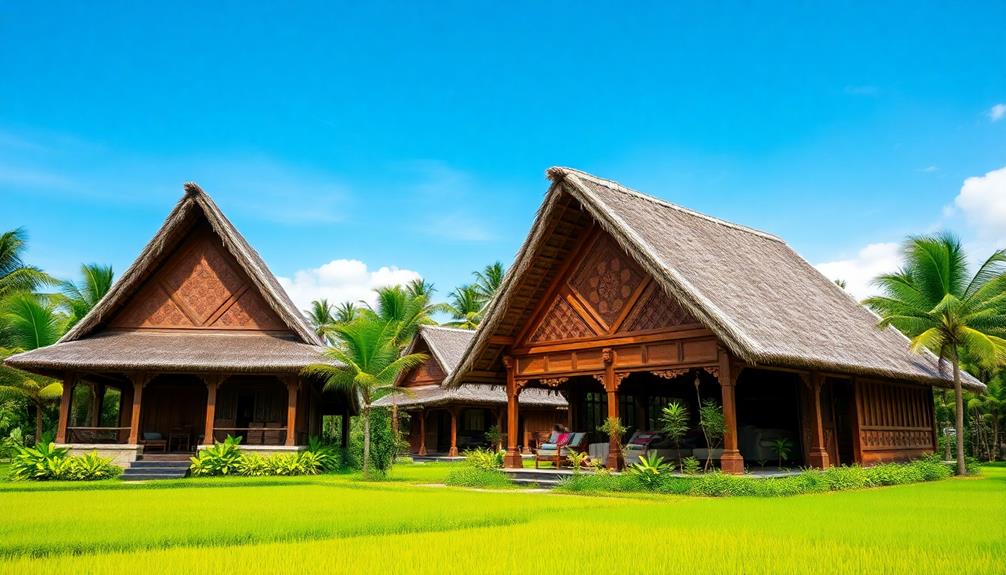
Throughout Indonesia's history, traditional vernacular architecture has emerged as a vibrant expression of community and culture. You'll find that traditional houses, known as rumah adat, are central to this architectural heritage. These structures reflect the unique customs and social relations of various communities, showcasing indigenous architecture that's rich in history. The designs often incorporate spiritual elements and cultural symbolism, further enhancing their significance within the community.
Community collaboration plays an essential role in constructing these homes, as local craftspeople come together to use natural materials like timber, bamboo, and thatch. They often employ traditional joinery techniques, avoiding nails to maintain the authenticity of the design.
One standout feature is the elevated structures built on stilts, which promote ventilation, protect against flooding, and reduce pest exposure—practical solutions influenced by Austronesian heritage.
As you explore notable examples, you'll encounter the Rumoh Aceh in Aceh, Batak houses in North Sumatra, and Rumah Gadang in West Sumatra. Each showcases distinct architectural styles and cultural significance, emphasizing the importance of preserving this heritage.
Although modern influences have impacted traditional architecture since the colonial period, initiatives to honor these roots continue, ensuring that the legacy of Indonesia's vernacular architecture remains alive.
Historical and Religious Structures
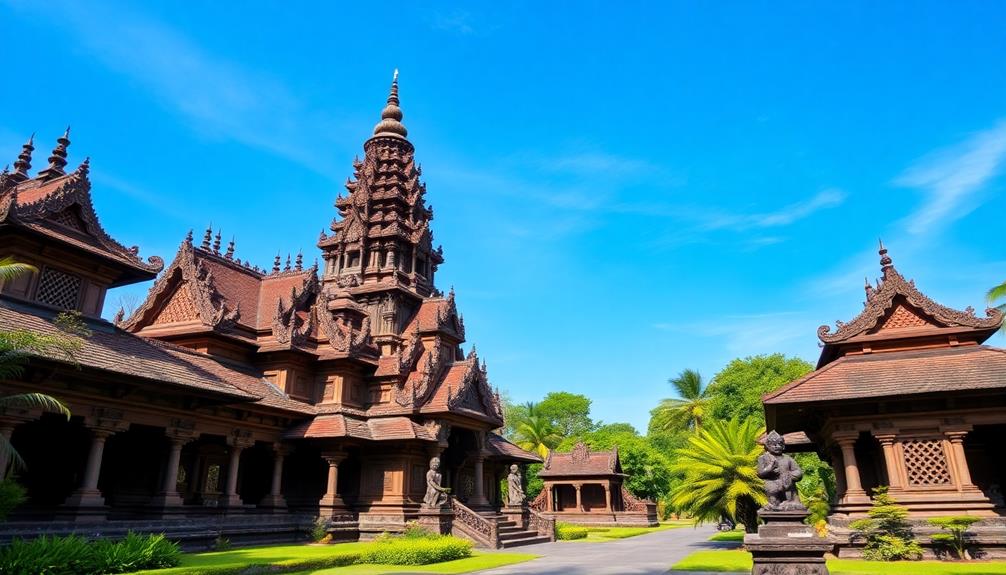
Indonesia's architectural heritage extends beyond traditional vernacular structures to include remarkable historical and religious sites that embody the nation's rich cultural tapestry. One of the most significant is Candi Borobudur, a UNESCO World Heritage site and the largest Buddhist monument, built between 750 and 850 CE by the Sailendra Dynasty. This breathtaking structure showcases the depth of Indonesia's architectural legacy, reflecting the diverse architectural styles influenced by the country's cultural heritage.
In contrast, the Prambanan temple complex, constructed in the 9th century, stands as the largest Hindu temple site in the country, featuring intricate carvings and soaring spires that highlight the era's architectural prowess.
You can also explore the Dieng Plateau, where some of the earliest surviving Hindu temples in Java remain, with only eight of the original 400 structures still standing today.
As you investigate Indonesia's architectural journey, you'll notice the emergence of Islamic architecture in the 15th century, exemplified by mosques like the Mesjid Agung in Demak. These mosques blend local design elements with influences from earlier Hindu-Buddhist structures, showcasing a unique fusion in the architectural landscape of Indonesia.
Colonial and Post-Colonial Influences
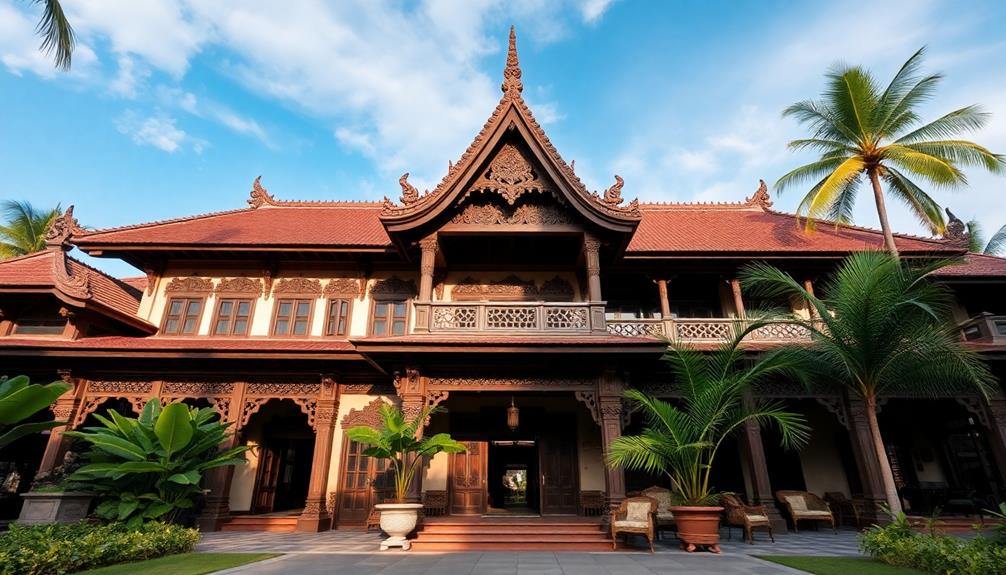
The arrival of European powers in the 17th century dramatically transformed Indonesia's architectural landscape, particularly in urban centers like Batavia (now Jakarta).
You'll notice that colonial architecture emerged, characterized by the unique "Indies Style," which blends Javanese forms with European decorative elements. This fusion created a distinct architectural hybrid that replaced many traditional homes, as masonry construction took precedence over wooden structures.
Additionally, the integration of local craftsmanship can be seen in several colonial buildings, echoing the rich cultural heritage of Indonesia. As you explore the early 20th century, you'll find modernist influences like Art Deco in Indonesian buildings, showcasing a shift that embraced global trends while adapting to the local climate.
However, the post-independence period saw a resurgence of nationalism in architecture. Significant projects, such as the National Monument (Monas) in Jakarta, became symbols of Indonesian pride, reflecting a newfound identity.
Despite the decline of traditional architecture under colonial influence, remnants remain. You can still observe a few colonial structures in urban Java, reminding you of this complex historical narrative.
The evolution of Indonesian architectural styles mirrors the country's journey through colonialism and into a post-colonial era, highlighting a continuous dialogue between tradition and modernity. For instance, elements of Indonesian wedding decor ideas can often be seen influencing contemporary architectural designs, blending heritage with modern aesthetics.
Contemporary Architectural Trends
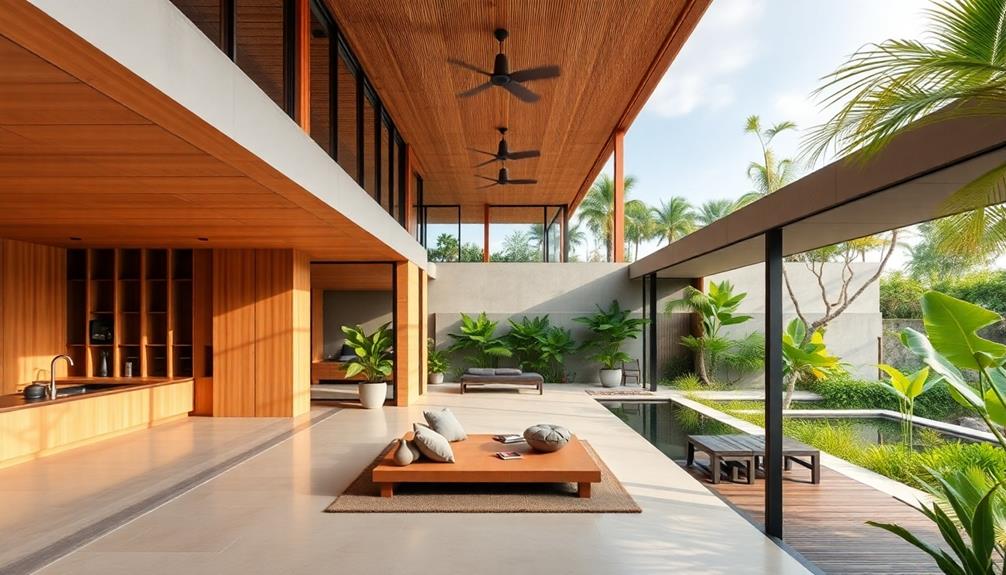
Building on the rich architectural heritage shaped by colonial and post-colonial influences, contemporary architectural trends in Indonesia reflect a dynamic fusion of global styles and local traditions.
You'll notice that contemporary architecture increasingly blends traditional elements with modernist cubic forms, creating unique structures that honor Indonesia's cultural roots. The integration of Balinese interior design concepts is particularly evident, where natural materials and earth tones enhance the overall aesthetic.
The Jengki style, for instance, showcases complex geometric volumes that express a sense of political freedom and national identity.
Innovative projects like the Soekarno-Hatta International Airport highlight this integration, where traditional motifs meet modern design principles.
Sustainable architecture is also gaining traction, with architects utilizing bamboo and shipping containers for eco-friendly building practices that don't compromise aesthetics.
Moreover, recent developments emphasize smart home technology and minimalist design, focusing on functionality and simplicity.
You'll find that these trends cater to urban living, enhancing your overall experience without overwhelming your space.
This exciting blend of styles and sustainable practices not only showcases Indonesia's architectural evolution but also reflects a commitment to environmental consciousness and modern living.
Preservation of Architectural Heritage

Amidst rapid modernization, preserving architectural heritage in Indonesia has become increasingly vital. The decline of traditional architecture, particularly rumah adat, has accelerated since the colonial period, leading to a significant loss of architectural heritage. As Western-style buildings replaced many traditional structures, cultural awareness of Indonesia's rich history took a hit.
To counter this, many modern designs are beginning to integrate natural materials and traditional aesthetics, which reflect the harmony with nature characteristic of Indonesian homes.
Government initiatives, such as Taman Mini Indonesia Indah, established in 1975, aim to showcase Indonesia's diverse traditional architectural styles and promote cultural awareness. Recent efforts focus on integrating traditional building methods and materials into modern designs.
Universities like Gadjah Mada and the University of Indonesia reflect this trend by incorporating vernacular forms into their contemporary structures.
The influence of the economic growth from the 1970s to the 1990s encouraged architects to honor cultural roots, often referencing the designs from the era of Hindu-Buddhist kingdoms. Various organizations and community projects now actively engage in raising awareness about the importance of preserving these traditional techniques.
As you navigate the urban landscape, remember that the preservation of Indonesian houses is vital for maintaining the identity and heritage of this vibrant nation.
Frequently Asked Questions
What Is the Architecture Style of Indonesia?
Indonesia's architecture blends traditional styles, like Rumah Gadang, with Hindu-Buddhist influences and colonial elements. You'll notice contemporary designs too, which embrace sustainability while reflecting the nation's rich cultural heritage and evolution through unique geometric expressions.
What Are the Houses Like in Indonesia?
In Indonesia, you'll find houses that reflect cultural diversity, often built from natural materials. They feature intricate designs, elevated structures for ventilation, and unique styles that showcase the rich heritage and community spirit of the region. Many of the houses in Indonesia also incorporate traditional Javanese architecture, characterized by its use of joglo roofs and intricate carvings. These architectural styles have been passed down through generations and reflect a deep respect for history and tradition. The result is a landscape dotted with stunning and unique homes that are a testament to the country’s rich cultural heritage.
What Is a Traditional Indonesian House Called?
You'd find that a traditional Indonesian house, often called "rumah adat," embodies an extraordinary blend of culture and craftsmanship, showcasing vibrant styles and rich histories that make each unique creation a true marvel of architectural artistry.
What Materials Are Used in Indonesian Architecture?
In architecture, you'll often find materials like timber, bamboo, and thatch. These local resources not only promote sustainability but also enhance cultural relevance, making structures more resilient and well-suited to their environment.
Conclusion
In exploring the rich tapestry of Indonesian architecture, you see how traditional styles blend with historical influences and modern trends. Each structure tells a story, reflecting the nation's diverse culture and heritage. As you appreciate this architectural journey, remember that preserving these treasures is vital for future generations. After all, if we don't learn from the past, we're bound to repeat it. Embracing and protecting this unique heritage is essential to keep Indonesia's architectural soul alive.
